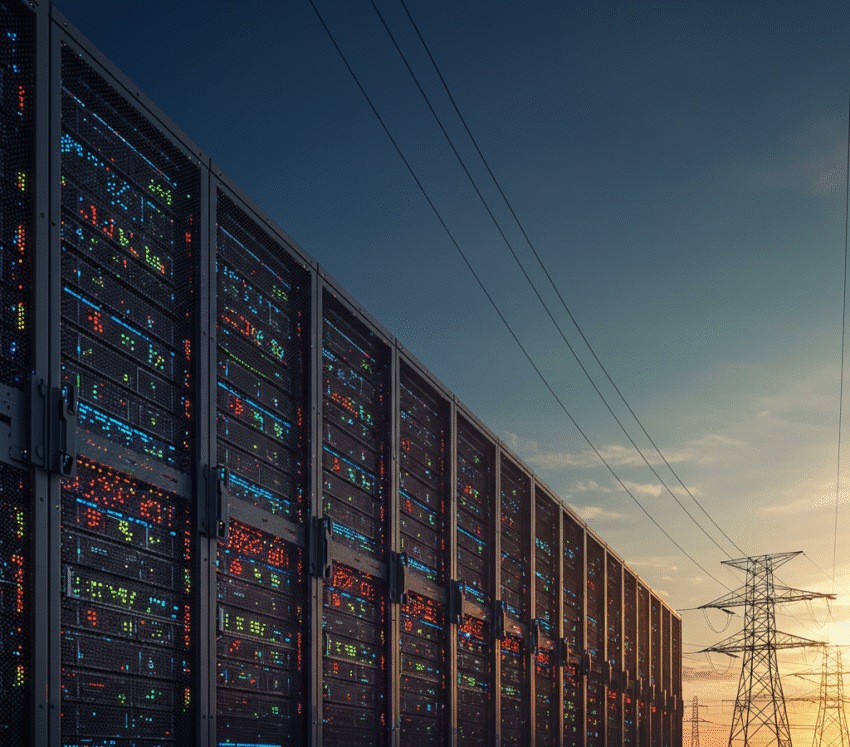America’s Power Grid vs. AI: Can Our Electricity Keep Up?
Imagine your computer running slow because there’s not enough electricity to go around. Sounds strange, right? But that’s a reality we might face sooner than we think. As artificial intelligence (AI) and data centers expand across the U.S., our country’s biggest power grid is struggling to keep up.
Why does this matter to you and me? Because everything from streaming movies to smart thermostats and even ordering pizza online runs through data centers powered by electricity. And AI? Well, it’s turbocharging demand like never before.
The Growing Electricity Demand from Data Centers
Artificial intelligence isn’t just about chatbots or robots. It’s also the power behind voice assistants like Alexa, recommendation engines on Netflix, and tools businesses use to make smarter decisions. But AI needs a lot of energy—a lot more than traditional computing does.
As AI grows, so does the need for powerful computers and massive data centers. These data centers don’t just chew through data; they devour electricity. Here’s where the issue starts. Much of this load is handled by America’s largest power grid: PJM Interconnection.
What Is PJM Interconnection?
PJM is the central nervous system for electricity in many parts of the eastern U.S., covering 13 states and Washington, D.C. It delivers power to more than 65 million people. But now, this backbone is under serious stress.
The Problem: Demand Is Outpacing Supply
Over the past year, requests to hook up new power-demanding data centers to PJM’s grid have skyrocketed. Experts are seeing a sharp rise in applications, especially from tech companies racing to expand their AI infrastructure.
What’s causing the surge?
- The rapid growth of AI tools like ChatGPT and others.
- Companies trying to build massive server farms in Virginia and Ohio.
- A shift toward renewable energy sources like wind and solar, which are less predictable.
This pressure is making PJM sound the alarm.
Just How Fast Is Demand Growing?
Let’s break it down. According to PJM, electricity demand in some areas is rising at levels they haven’t seen in years. Virginia, in particular, is becoming a hotspot for tech companies building AI-focused data centers.
Here’s a quick look at power-demand projections for some of the key states within PJM:
| State | 2023 Demand (GW) | 2026 Projected Demand (GW) | % Growth Expected |
|---|---|---|---|
| Virginia | 20.0 | 24.6 | 23% |
| Ohio | 19.5 | 22.1 | 13% |
| Pennsylvania | 26.0 | 28.2 | 8% |
| Maryland | 15.3 | 17.0 | 11% |
That may not seem like a lot, but even a 1% increase can strain the grid if we’re not ready for it. Especially when so much electricity is needed all at once.
What’s Slowing Down the Grid’s Response?
Unfortunately, upgrading the grid isn’t like flipping a switch. It takes years to develop new power lines and build power plants. And while renewable energy is part of the plan, it doesn’t always provide steady power. The sun sets, and the wind doesn’t always blow.
Coal and natural gas plants are fading out as clean energy takes priority, which is great for the planet—but it also means less backup power when demand spikes.
On top of that, PJM has reported delays in connecting new power sources to the grid. In fact, more than half of the generation that’s supposed to come online fails to do so on time.
Power-Hungry AI: The Silent Electricity Thief?
Let’s think about this: running a generative AI model like ChatGPT can use nearly 10 times the electricity required for a Google search. Multiply that by millions of users—and that’s a serious power drain.
Imagine every question we ask an AI using the electricity equivalent of several light bulbs running for hours. That adds up quickly.
What Could This Mean for Regular People?
So, why should you care?
- Higher utility bills: If demand outpaces supply, prices could go up.
- Risk of brownouts: More pressure on the system means a higher chance of power shortages in extreme weather or emergencies.
- Delays in shifting to clean energy: If the grid can’t keep up, we may fall back on dirty fuels just to keep the lights on.
A little concerning, right?
What’s Being Done to Fix It?
The good news? PJM and others aren’t sitting on their hands. They’re speeding up the process of evaluating new energy projects and trying to clear a backlog of delayed power plant connections.
They’re also working on making the grid smarter. Think of it like turning your power grid into a high-tech GPS system that can head off traffic jams before they happen.
And some tech companies are investing in their own solar and battery systems, easing their burden on the public grid.
Is There a Brighter Future?
Yes—but only if we act now. It’s kind of like remodeling a home while still living in it. We want more space (energy), new appliances (AI), and better insulation (clean energy). But we can’t turn off the lights and water in the meantime.
If we get the timing right—by upgrading the grid, expanding clean power, and planning smartly—we can support AI innovation without sacrificing stability.
Final Thoughts
AI is here to stay, and it’s growing fast. But behind every beep and byte is electricity—and we can’t take that for granted. Just like roads need to be widened when a city grows, our power grid needs to scale up to handle this digital revolution.
The bottom line? We’re at an energy crossroads. Do we invest now to build a stronger, smarter power grid—or risk falling behind just when the future is knocking?
As our homes, jobs, and schools become more connected than ever, the answer seems clear. Now’s the time to power up.
What do you think? Should tech companies foot part of the bill for the grid upgrades? Or should governments step in faster? Join the conversation in the comments below!
